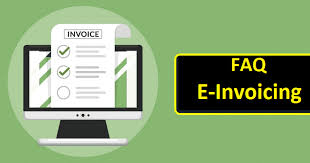The e-Invoicing system was implemented from 1st October 2020 for taxpayers with an aggregate turnover exceeding Rs.500 crore. e-Invoicing was extended to businesses with an aggregate turnover exceeding Rs.100 crore from 1st January 2021. On 8th March 2021, the CBIC also notified the applicability of the e-invoicing system from 1st April 2021 for businesses with total turnover ranging between Rs.50 crore to Rs.100 crore. Thereafter, the government extended the e-invoicing applicability to businesses having more than Rs 20 crore turnover w.e.f 1st April 2022. Later, the system expanded to cover businesses with turnover over Rs.10 crore from 1st October 2022. Recently, CBIC extended the e-invoicing for businesses having more than Rs 5 crore turnover w.e.f 1st August 2023. Aggregate turnover for e-invoicing will include the turnover of all GSTINs under a single PAN across India.

What is e-Invoicing under GST?
e-Invoicing, a.k.a Electronic Invoicing, is a process to make invoices more authentic and compliant for tax return filing purposes for B2B businesses. An e-Invoice consists of invoice data in a more structured visual presentation. With the adoption of e-Invoice systems, businesses can pre-populate the returns for filing purposes and get rid of reconciliation challenges. Businesses can share invoice data to the GST system by integration of IRP (Invoice Registration Portal) via GSP (GST Suvidha Provider) for validation.
Can we raise e invoice after invoice date?
Yes, e-invoice is generated after the invoice date. Also, until 31st October 2023, there was no time limit fixed by the GST systems to generate e-invoices. From 1st November 2023 onwards*, taxpayers with AATO equal to or more than INR 100 crore must generate e-invoices for tax invoice and credit-debit notes within 30 days of invoice date, failing which the invoices/CDNs will be non-compliant. This will be eventually extended to taxpayers with AATO more than Rs.10 crore from 1st April 2025.
What is time limit for e invoice?
Until 31st October 2023, there was no time limit fixed by the GST systems to generate e-invoices. From 1st November 2023 onwards, taxpayers with AATO equal to or more than INR 100 crore must generate e-invoices for tax invoice and credit-debit notes within 30 days of invoice date, failing which the invoices/CDNs will be non-compliant. Later, as per the 5th November 2024 advisory issued on the GSTN portal, the time limit of 30 days for reporting e-Invoices on IRP portals has been extended for taxpayers with an AATO of Rs.10 crore and above. To provide sufficient time for taxpayers to comply with this requirement, the changes would come into effect from 1st April 2025 onwards.
There is no defined time limit or period within which e-invoice must be generated for the rest. Hence, for such taxpayers, it is advised to create e invoice on or after the invoice date but before the filing of GSTR-1 returns.
Can we generate e invoice in back date?
No. Until 31st October2023, there was no time limit fixed by the GST systems to generate e-invoices. From 1st November 2023 onwards, taxpayers with AATO equal to or more than INR 100 crore must generate e-invoices for tax invoice and credit-debit notes within 30 days of invoice date, failing which the invoices/CDNs will be non-compliant. There is no defined time limit or period within which e invoice must be generated for the rest. Hence, for such taxpayers, it is advised to create e invoice on or after the invoice date but before the filing of GSTR-1 returns.